how does a domestic grease trap work
Grease traps need periodic cleaning and there are. Basically a grease trap is a plumbing device that separates the grease oil and excess food stuffs from the water that can safely enter the sewer system.
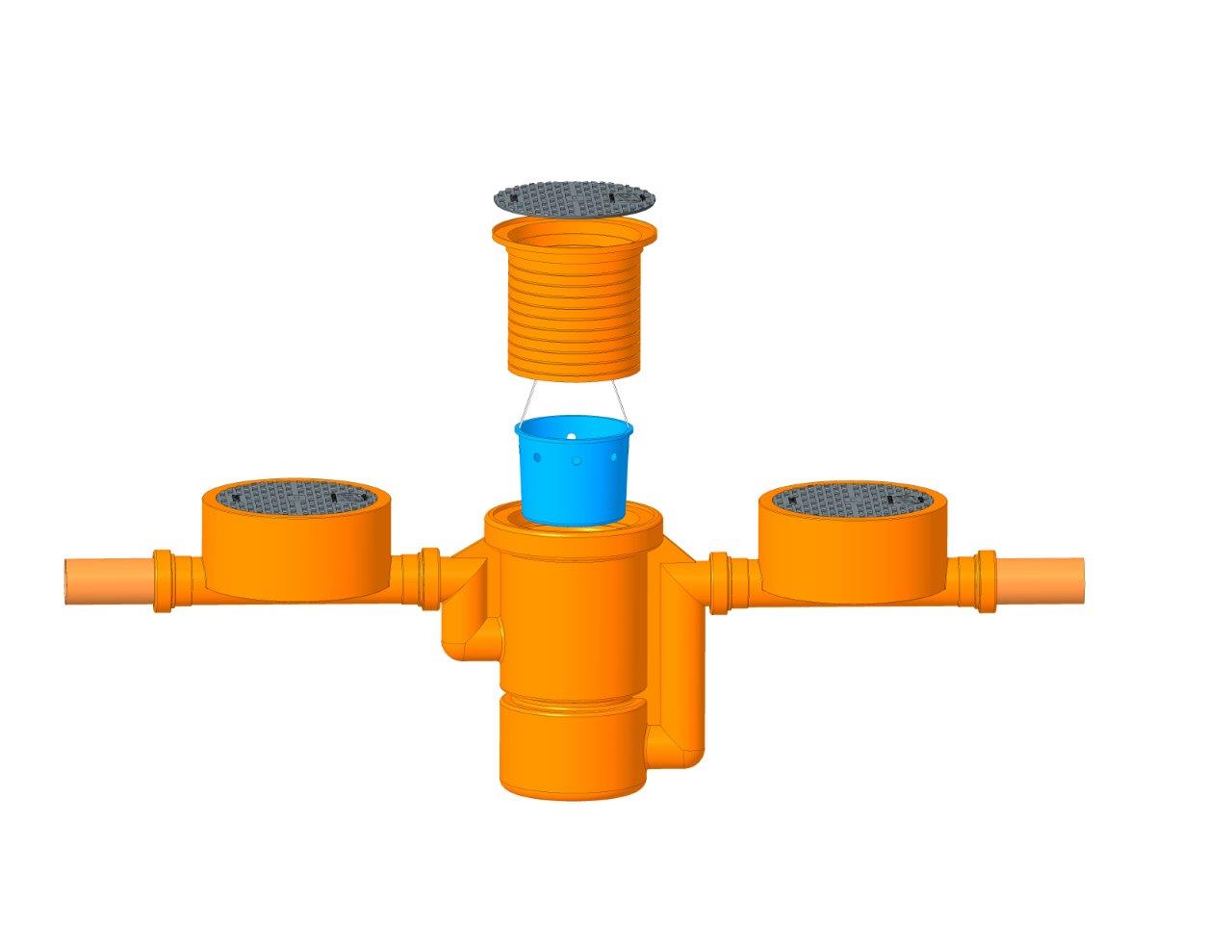
Domestic Grease Trap Jfc Civils
How Grease Traps Work.
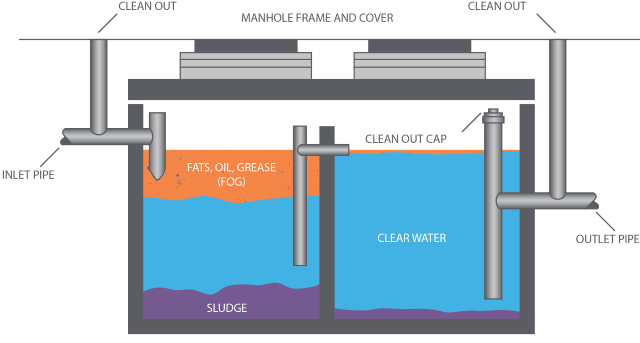
. There are many different types of grease traps and interceptors and may work in slightly different ways but the end result is always the same. The grease is located at the top. The trap works by cooling warm greasy water and separating the components.
How does a residential grease trap work. Do residential homes have grease traps. Essentially a grease trap also known as a grease intercepto r is a large underground container designed to collect liquid waste and facilitate passive separation of fats oils and grease FOGs from other liquid waste.
The cooler water - minus the grease -. The trapped or captured grease and oils fill the trap from the top down allowing the clean water at the bottom of the trap to flow into the sanitary. In the most basic terms a grease trap works by slowing down the flow of warmhot greasy water and allowing it to cool.
Then how do grease traps work. As the water cools the grease and oil in the water separate out and float to the top of the trap. When waste water from the kitchen moves through the grease trap the grease and oils rise to the surface and are trapped inside the receptacle using a system of baffles.
Grease traps are designed to do just what the name implies which is to trap fatty oils greases and sludge and to separate the oils from water. From here it drains out into the sewer lines leaving the FOG behind in the grease trap. As the water cools the grease and oil in the water separate out and float to the top of the trap.
Wastewater from the sinks will pass into the grease interceptor where it is held in the traps reservoir. It may not be the most appealing way to put it but a grease trap really does act like a mini septic tank in your drainage system. A grease trap is in place to prevent fats oils and grease collectively known as FOG that go down the drains from entering into either the public sewer system or the septic tank.
The cooler water - minus the grease - continues to flow down the pipe to the sewer. Whilst they both fundamentally do the same work. A system of baffles may be used to slow down water and allow FOGs to cool and effectively separate.
Typically a durable stainless steel or epoxy coated steel box designed to trap grease until cleaned out. This hardens the different kinds of grease into separate layers making it easy to remove it. When wastewater enters a grease trap the flow rate is reduced enough so the wastewater is given enough time to cool and separate into 3 layers.
The substances pass through a catching system which gives them time to cool off and solidify and the water passes through the drain as normal. The water cools and as it does the grease will harden and food solids will settle. Essentially it works by effectively cooling grease coming from your pipes.
Grease traps are used as effective plumbing devices which act to intercept grease oil and solids before they enter your disposal drainage systems. It is a well-known fact that fats are insoluble in water and do not intermix with each other. Once the water enters the chambers its flow rate decreases.
How does a Grease Trap work. Water used to cool the wastewater allowing the grease to solidify and separate. The working mechanism of a grease trap is rather simple than other products.
How does a grease trap work. Some grease traps could even have another tank for trapping additional grease that might have escaped from the first one. When FOGs enter the drain it may only travel a few metres before it solidifies sticks to the drain pipes and accumulates with other material to create blockages.
How Does A Grease Trap Work. Thus fats and oils float on top of water. The grease traps function is to slow down and cool the wastewater allowing it to separate and be retained within the tank.
Waste water or effluent enters the grease trap and fills the tank. Grease traps usually have tube fittings that enable the rest of the wastewater to flow through towards the exit pipe. There literary all types of waste that go into your pipes have their own place.
The trap separates grease and oils from wastewater and the grease floats to the top and is manually removed as wastewater exits from an outlet pipe and into the citys sewer system. How does a grease trap work. Residential grease traps work by exposing the greasy water to extreme temperatures.
Flow rate controller slows the wastewater down before it enters the grease trap. Grease traps work by using a system of plastic wall structures to slow down and better control the water flow. Passive traps simply slow the wastewater down long enough for them to cool and separate the lighter fats oils and grease float to the surface and the heavier food solids sinking to the bottom.
A standard passive grease trap is comprised of two separate compartments called tanks. Since FOG float to the surface the grease trap fills from the top down as grease enters it and any water that is free of. How Grease Traps Work.
Manual Grease Traps. A crossover pipe positioned at an angle connects. Baffles metal barriers which slow the wastewater down to help separate the water from fat oil and grease.
By allowing the fat grease and oil FOG to cool a grease trap is able to separate the different layers of wastes with water. All waste generated is stored in the same place. How a grease trap works.
They look like boxes which sit within your drain and which intercept the flow of wastewater between a sink. FOG can quickly clog up pipes and create major obstructions so as much as possible should be kept from going through the drainpipes. In the most basic terms a grease trap works by slowing down the flow of warmhot greasy water and allowing it to cool.
Grease traps work on the basis that animal fats and vegetable oils grease are 10 to 15 percent less dense than water and that grease wont mix with water. Inlet Pipe the pipe which wastewater flows through to reach the grease trap. How does a residential grease trap work.
In most food service businesses all kitchen drains are routed to a grease trap. The clean wastewater in the middle escapes out through the trap outlet. For example food solids go at the bottom of the trap while the primary waste is located in the center.
In the most fundamental term a grease trap or grease inceptor functions by cooling warm or hot greasy water. How Does a Grease Trap Work. Grease traps are not very common at homes and are mostly found in restaurants and food businesses etc.
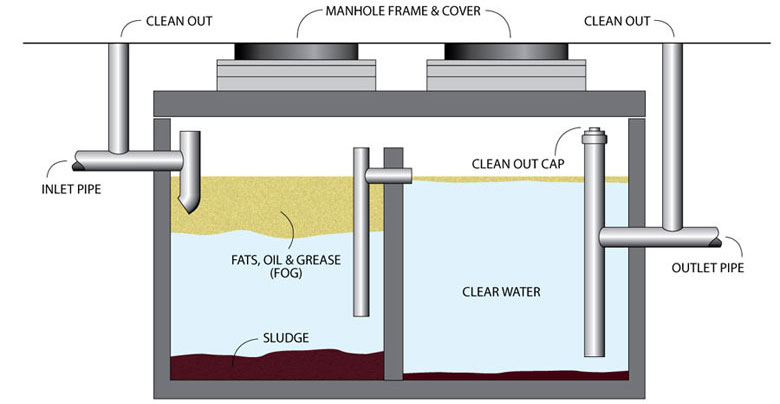
How Grease Traps Work Mahoney Environmental

7 Best Domestic Grease Traps For Kitchen Sink Review And Buying Guide
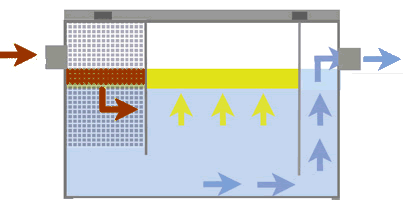
Domestic Grease Trap Bsgt1 Stainless Steel

Grease Trap Vs Grease Interceptor Liquid Environmental Solutions

How To Install And Clean A Grease Trap For Your Home Home Stratosphere

Commercial Kitchen Equipment China Grease Trap China Grease Trap Oil Water
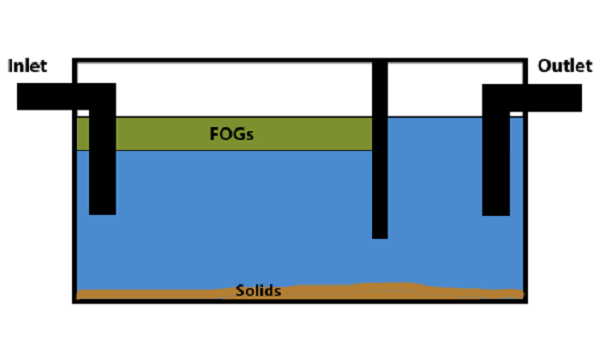
How Does A Grease Trap Work Uk Grease Traps Direct
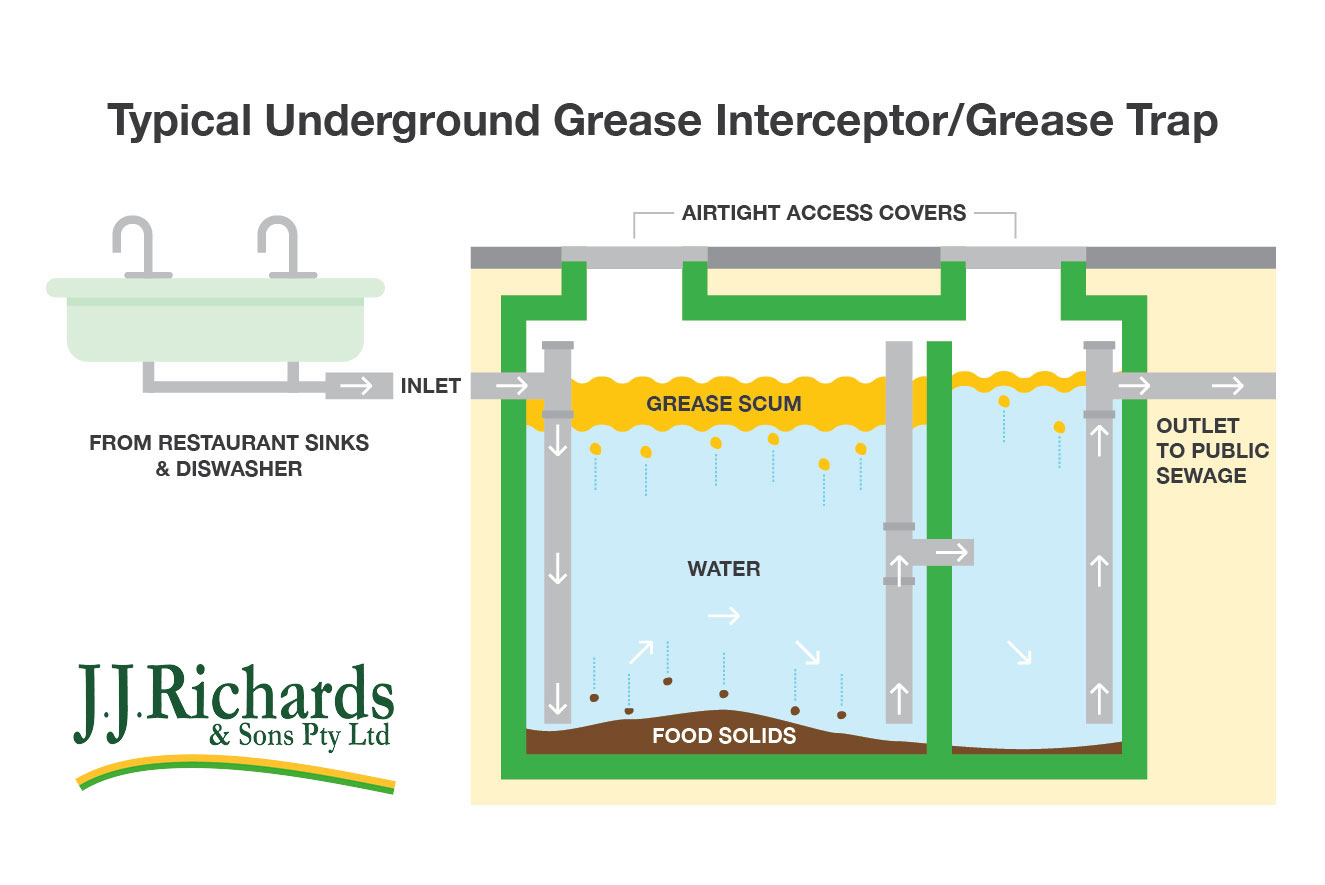
J J Richards Sons Grease Trap Cleaning Services
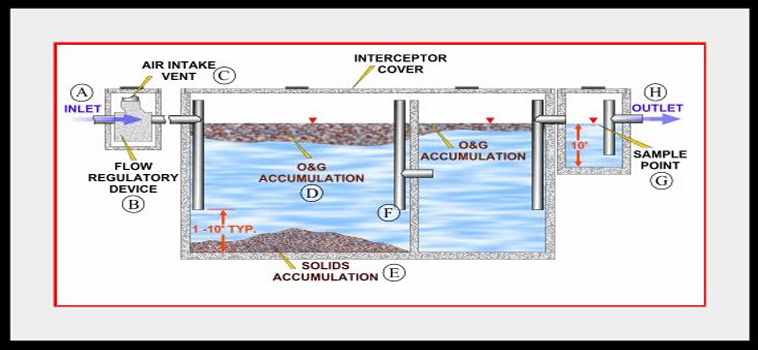
How A Grease Trap Works Nitschke Liquid Waste
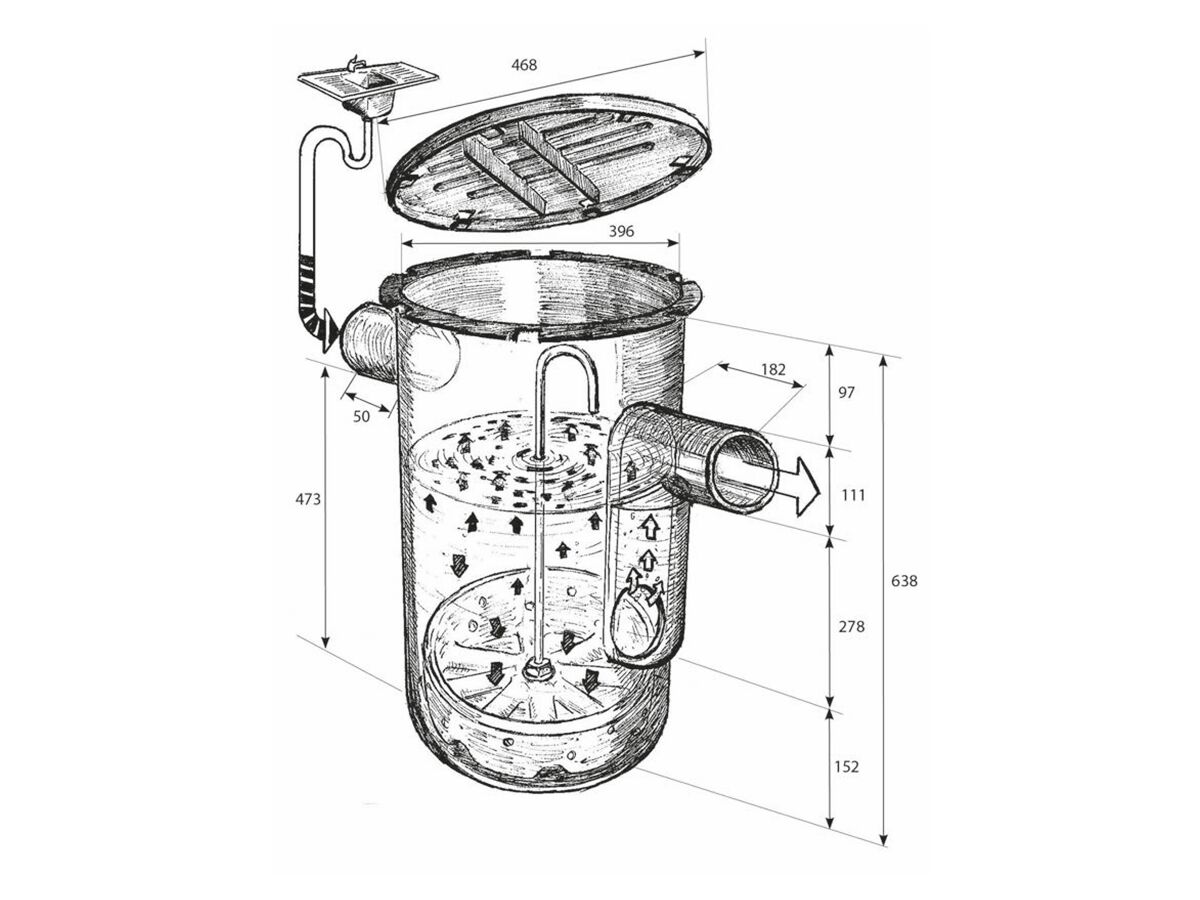
Plastic 45 Litre Grease Trap With G Baff From Reece
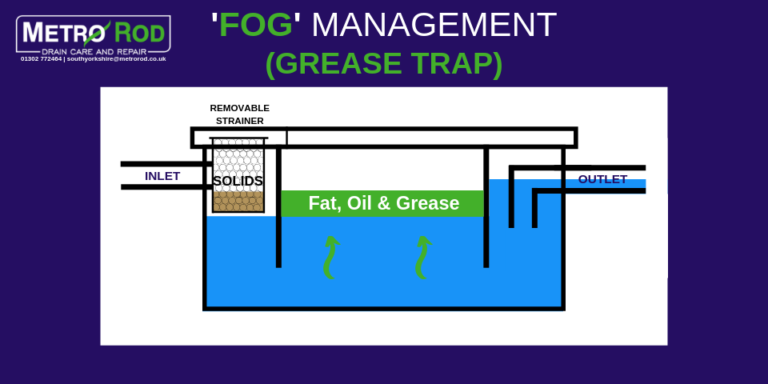
Grease Trap Emptying Dorset And Hampshire
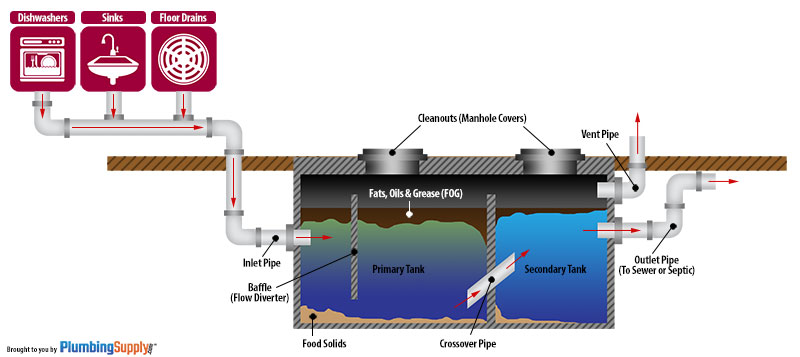
How Grease Traps Interceptors Work

A Schematic Diagram Of A Traditional Grease Trap Two Chamber With 1 Download Scientific Diagram
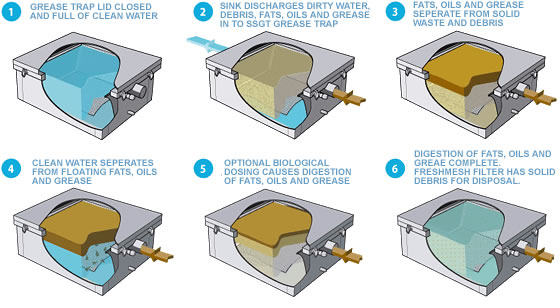
Stainless Steel Grease Trap Separator Uk Made Patented Freshmesh Sedim
What Is A Grease Trap And How Does It Work

Grease Trap Above And Below Ground Viking Plastics
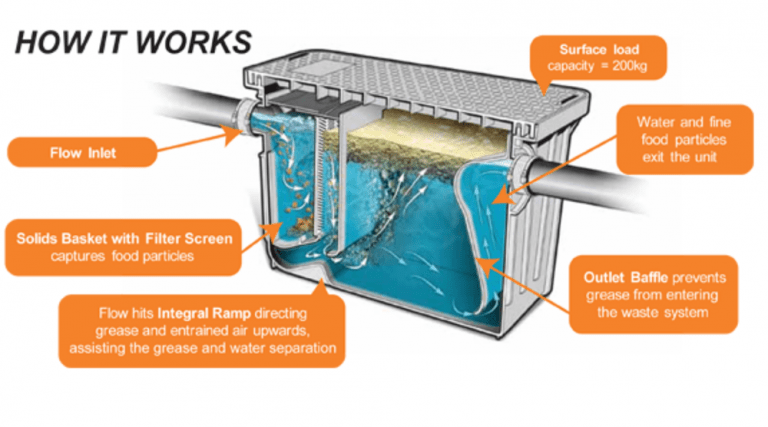
Grease Trap Emptying Manchester Macclesfield Metro Rod

A Schematic Diagram Of A Traditional Grease Trap Two Chamber With 1 Download Scientific Diagram
